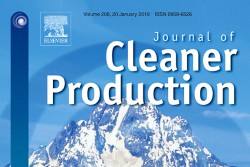Press Release: New paper provides forecast of agricultural harvesting residues in Europe
The European Commission has recently been pushing a more sustainable renewable resource strategy, with the aim of ensuring food security, managing natural resources sustainably, and reducing dependence on non-renewable and unsustainable resources. Part of this strategy involves modelling, mapping and accurately understanding the available biomass in the agroforestry sector. The idea is to find out what biomass is available across Europe, which could be used to create materials which are normally derived from fossil fuels. In light of increasing demand for sustainably sourced biomass, the EU-funded project Rehap has published a paper that uses new methods to provide a spatially explicit forecast of biomass potentials from the agricultural sector that are available for conversion into useful products. The paper outlines the materials and methods of this forecast prediction, data on the specific raw material yields and potentials, and results on the forecasted agricultural residue potentials of biomass until the year 2030 in the EU. The broader aim of the Rehap project is to create new materials for the construction sector that are derived from agricultural and forestry waste. This new and spatially explicit forecast of where and when this waste can be found in Europe will ensure that any biomass they use is sustainably sourced. The publication of this paper will also provide other researchers access to the new and improved forecast, facilitating a significant step towards a greener and more resourceful use of natural resources in Europe, whilst promoting a more competitive bio-economy. By conducting this research, Rehap is leading the way in furthering the new EC strategy, as the results from this forecasting can be used for decision-making by those working in the bio-economy to ensure that any biomass being used is not required for cultivation in agriculture, but will be facilitating the progression of the circular economy without damaging other sectors. The paper, "Spatially explicit forecast of feedstock potentials for second generation bioconversion industry from the EU agricultural sector until the year 2030", has recently been published in the Journal of Cleaner Production. Rehap Rehap is an EU-funded project, championing the bio-economy and agriculture research in the EU. The project aims to create new products that can be used to make eco-friendly resins for wood and bio-based chemicals for greener cement. The project has been focusing on lignin, tannin and cellulose, essential for the design of biopolymers, which are first extracted before they are transformed via pioneering new processes to create artificial chemicals that are commonly used in the construction industry, normally derived from fossil fuels. The Rehap website can be found here: www.rehap.eu To talk to someone about the project or to arrange an interview, please contact Amelia Brice: amelia@ipl.eu.com
Countries
Belgium, Germany, Spain, Finland, France, Italy, United Kingdom



